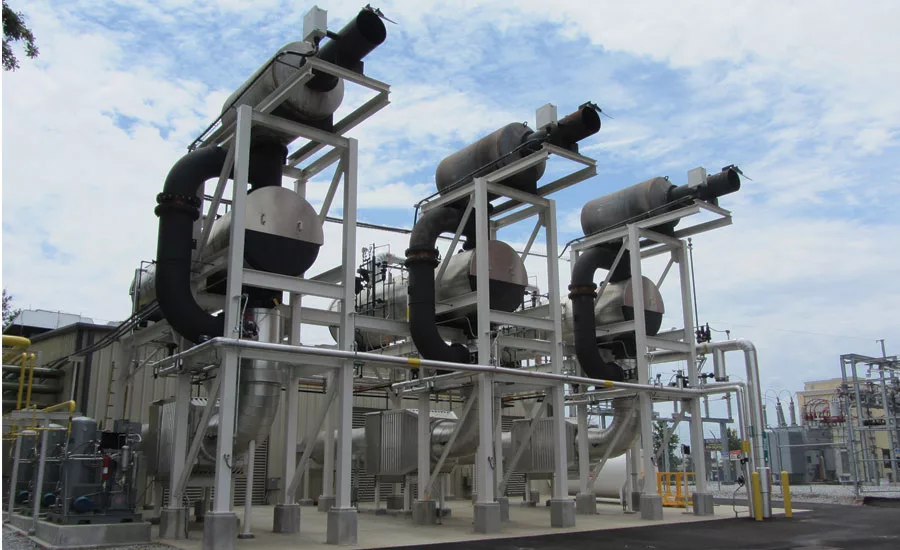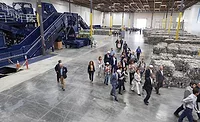Beverage plants increase energy efficiency, adopt zero waste
Plants diversify their energy profile

Whether it is beer-makers using treated grey water in their recipes or beverage facilities powering their plants with solar energy, the push to care for the planet’s resources is impacting every category within the beverage industry. Yet, 10 to 15 years ago, factors like zero waste, Leadership in Energy & Environmental Design (LEED) certification, recyclability and “green” technology were not top-of-mind for consumers or the supply chain of beverage facilities, experts say.
However, because of a changing consumer and societal landscape, today’s beverage plants are championing environmental change and are interested in analyzing what they can do to reuse water, minimize waste, reduce temperatures, adopt solar power and more, they add.
“There has been a major shift in philosophy,” says Kyle Wilson, architect and senior designer at HDA Architects, St. Louis. “The majority of our clients ask about environmentally responsive solutions for building products … [I]t depends on many factors, including geography, the plant’s size and its footprint. … Whether it be water security through a limited water supply, like the drought in California, to the regional implications of solar power and whether utility companies are offering rebates, innovative ways of maintaining controlled temperatures, [or] low-flush toilets and aerating faucets, beverage plants are looking to the future and trying to stay ahead of the curve as it relates to operational challenges and sustainability.
“For many businesses, this is a smaller subset of a larger corporate social responsibility plan,” he continues. “But at the end of the day, it also comes down to cost effectiveness and return on investment (ROI). … We analyze and help companies be more efficient and sustainable.”
Portland, Maine-based Woodard & Curran’s Senior Vice President Lloyd Snyder notes that 75 percent of beverage companies are trying to achieve some degree of a sustainable facility as compared with less than 10 percent 15 years ago. He attributes this to three main factors: consumers are more conscious of the environmental impacts of the products they buy; governments are creating incentives for sustainable production; and higher energy and raw material costs are prompting companies to look for waste minimization, energy efficiency and water efficiency, he says.
“Plants are seeing [an] increased cost of waste disposal and zero waste can reduce operational costs,” he says. “There are also external stakeholders, such as community groups, pressuring facilities to reduce their impact on the local community infrastructure. There is also pressure in drought-stricken areas like California to use less water and zero waste can help reduce water needs.
“… As our natural resources, like water, continue to come under pressure and costs rise, sustainable solutions and cost-effective solutions will be synonymous. Water and waste minimization must be actively implemented to reduce volume and load of the waste stream,” he continues. “Beverage plants should focus on processes that discharge their waste to drains. Has that process been optimized? What changes can we employ in tank cleaning processes that will make it more efficient and reduce the quantity of waste? … Reducing changeovers also makes the plant more efficient from both a capital utilization and waste standpoint.”
Among the ways beverage-makers have approached sustainable facility goals is through LEED certification. In fact, Chico, Calif.-based Sierra Nevada Brewing Co. announced that it has achieved LEED Platinum status — the highest level available — for its Mills River, N.C.-based brewery, which opened in 2015. The ratings consider a large subset of construction factors, including efficiency, water performance, site management and indoor environmental quality such as low-emitting paints, lighting control and thermal settings, it says.
However, both HDA’s Wilson and Woodard & Curran’s Snyder note that LEED is no longer a top trend for beverage facilities. “The trend for LEED has reached its peak and is actually on the decline for manufacturing facilities,” Snyder says. “LEED is not a measurement of sustainable practices for manufacturing processes. Production is where sustainable practices are impactful.”
HDA’s Wilson agrees. “It is not the certification that makes a building environmentally sound,” he says. “It is all the planning, design and education of the client about best practices that is crucial since we implement most of the things that LEED would require anyway.”
But beverage plants aren’t the only ones implementing sustainability initiatives and zero-waste programs within their operations. Retailers also have seen the value in adopting more sustainable ways. For example, Cincinnati-based The Kroger Co.’s construction team uses recycled materials including wood, metal, cardboard, concrete brick and plastic, when remodeling, expanding and building new Kroger grocery stores, it says. It also has replaced its single-use packaging and platforms with reusable versions and aims to meet or exceed the United States Environmental Protection Agency’s (EPA) zero-waste threshold of 90 percent diversion from landfill in its facilities by 2020, it states in its 2016 Sustainability Report. Since 2013, the company has diverted more than 270,000 tons from landfill, it adds.
Facility innovation
More sustainable facilities continue to emerge that are incorporating innovative waste reduction practices.
Due to break ground in February 2017, a beverage facility in Coastal California will be outfitted with several sustainable design features, HDA’s Wilson says. These include a mechanical ice storage system that makes ice at night when power is cheaper and turns the system off, allowing the ice to melt during the day to provide cooling for the facility during the daytime heat. It also will feature an advanced building envelope that utilizes a high R-value insulated roof and a white reflective roof membrane and insulation that is integrated into tilt-up concrete walls to create a thick thermal barrier between the building’s exterior and interior controlled environment along with LED lighting throughout the facility, he says.
The building design also will incorporate future design capabilities, including a solar panel field. “An ROI study was performed, and it was determined that the timing was not right to purchase a solar panel system, but that may change as the cost of solar panels comes down in the future and/or incentives increase,” Wilson explains.
Depending on the aggressive nature of the plant’s material, water and energy efficiency plans, and its overall capital investment strategy, a plant often can transition to a sustainable facility in three to five years, Snyder says. “It takes senior management to believe in the goals because the payback is not always apparent,” he adds.
Experts note that successful beverage plants are adopting zero waste as a subset of an overall sustainable facility strategy and employing other eco-friendly strategies like reduced energy consumption and sustainable material practices.
“Water reclamation and water reuse will become the norm, and incoming potable water will be only used for product water.” Snyder says. “Another impactful area is energy strategies. Energy pricing has proven to be very volatile over time. By adding diversity to a facility’s energy portfolio (gas, solar, biomass, fuel oil, cogeneration), a facility can smooth out this volatility.” BI
Looking for a reprint of this article?
From high-res PDFs to custom plaques, order your copy today!




